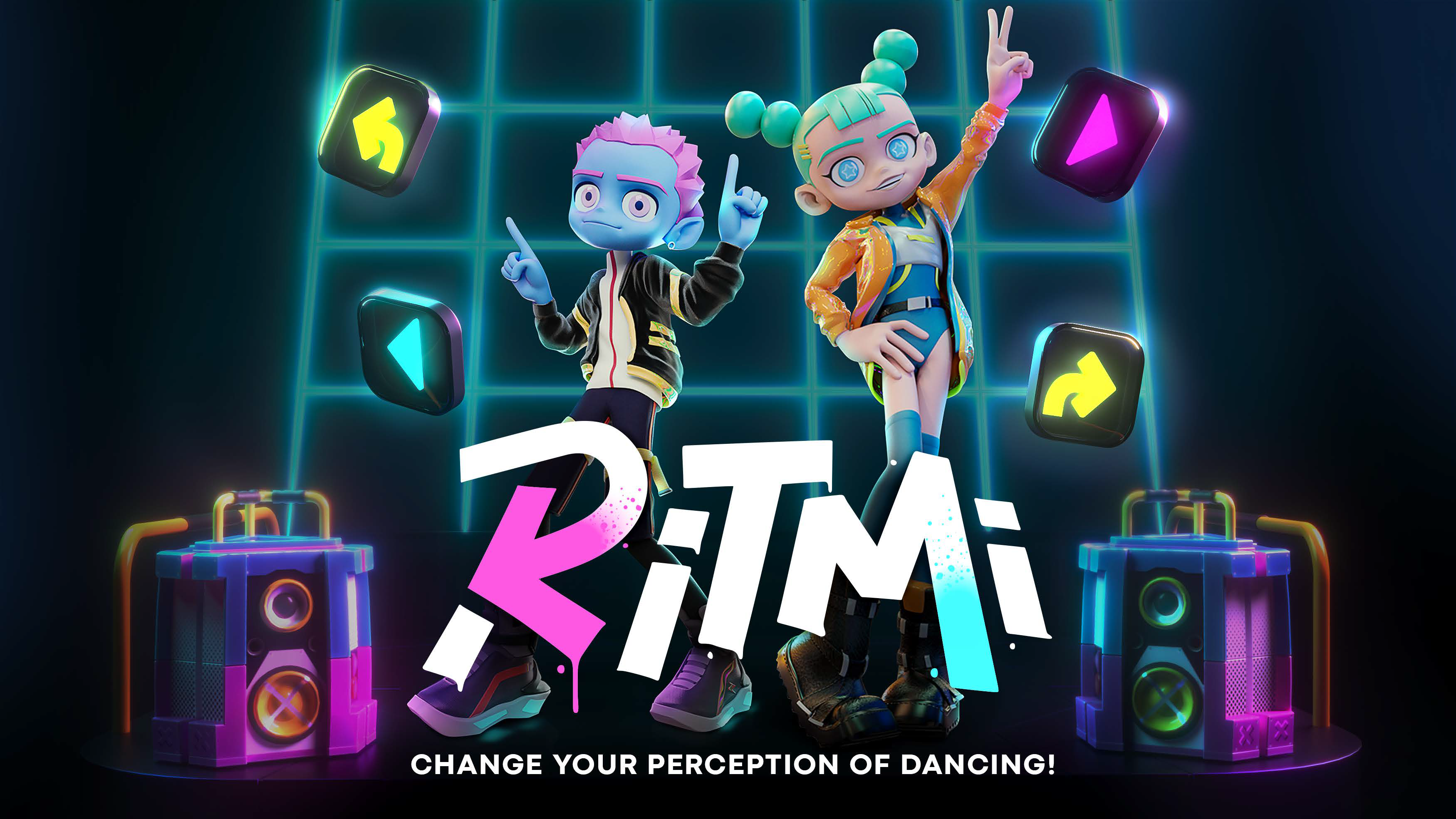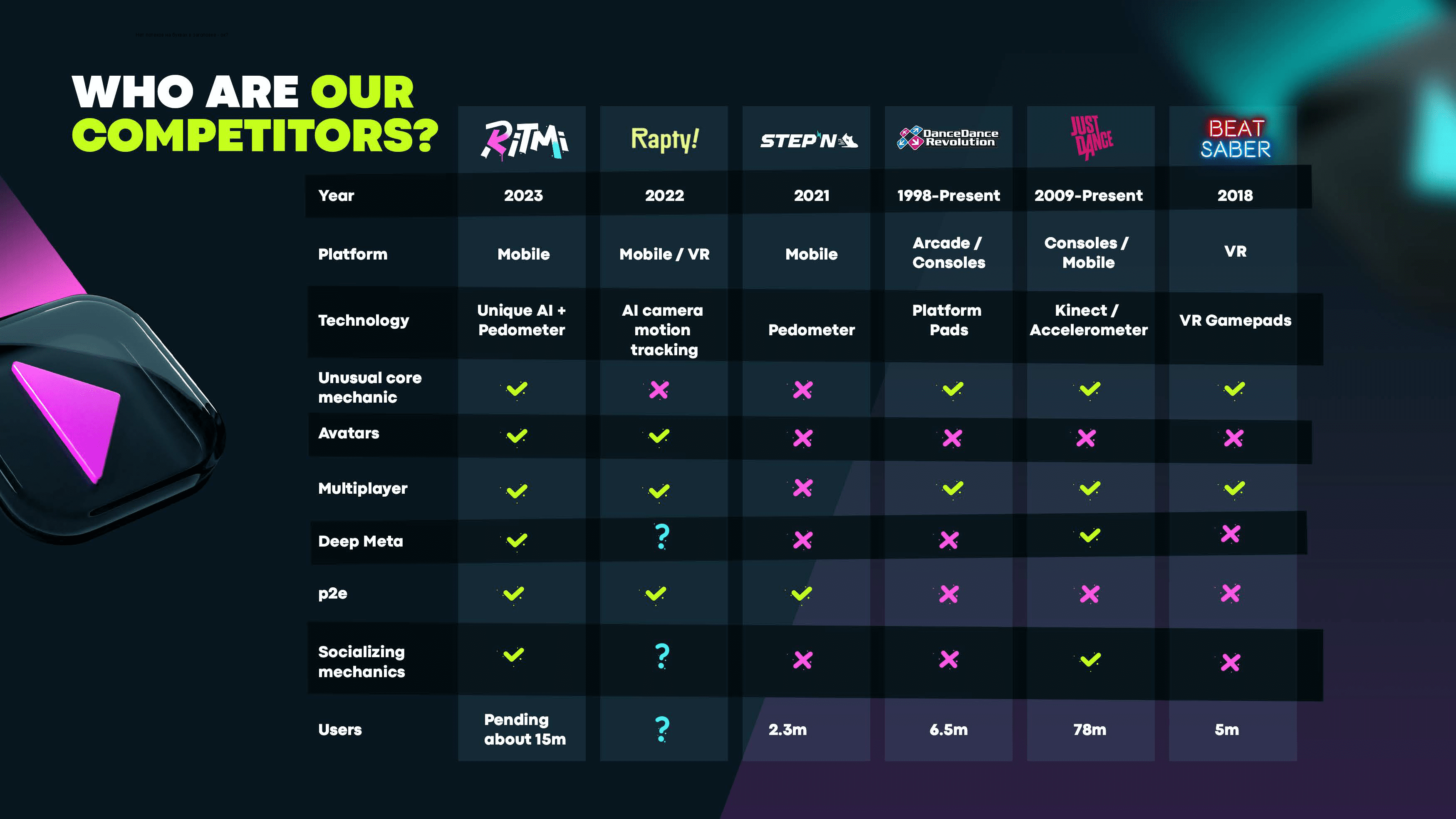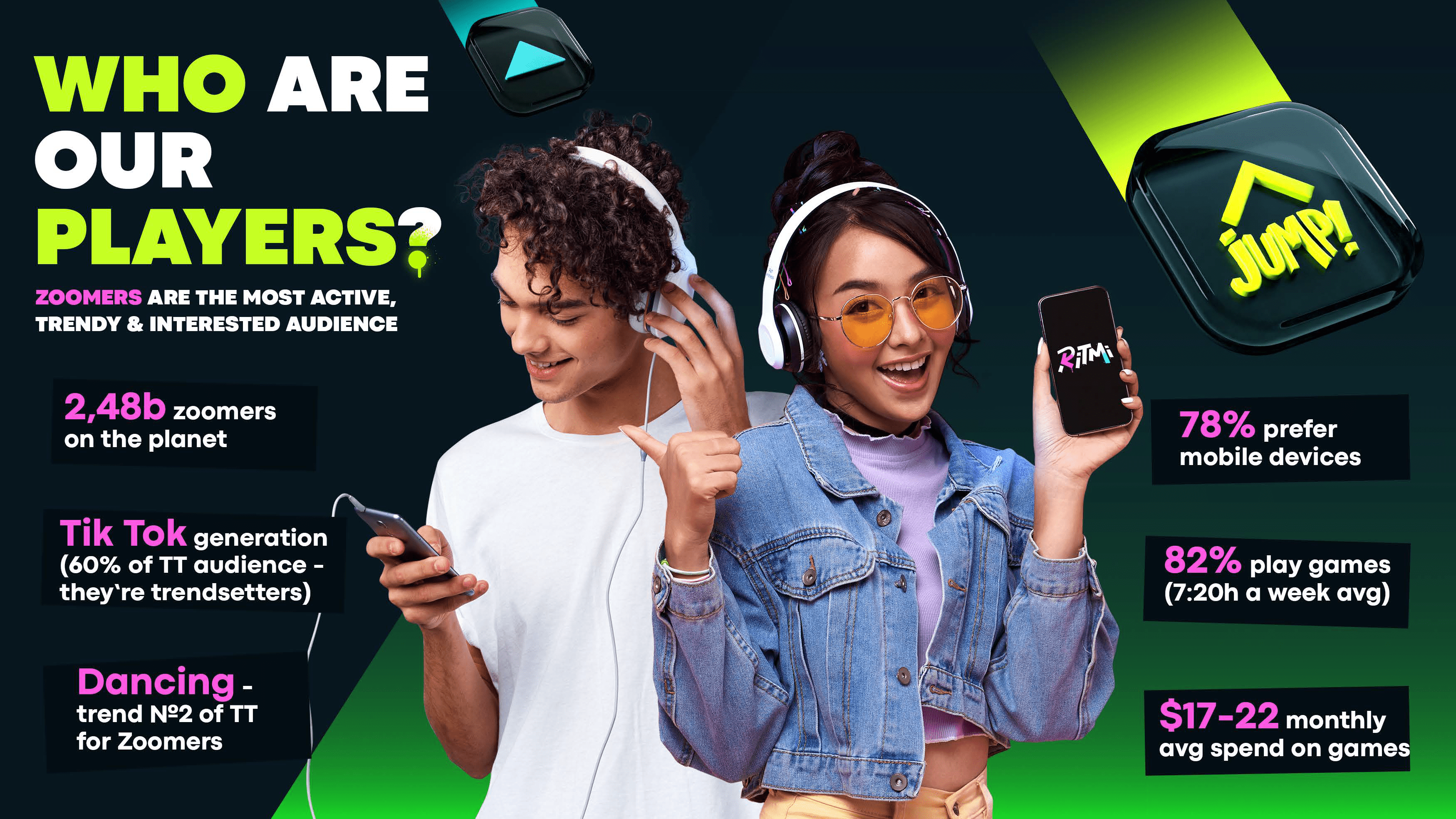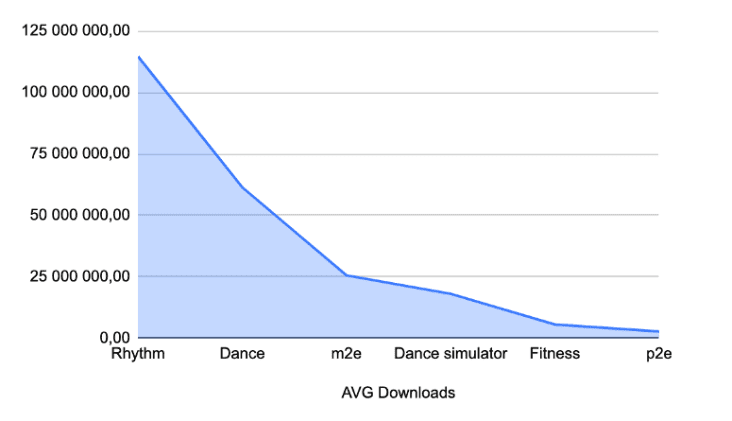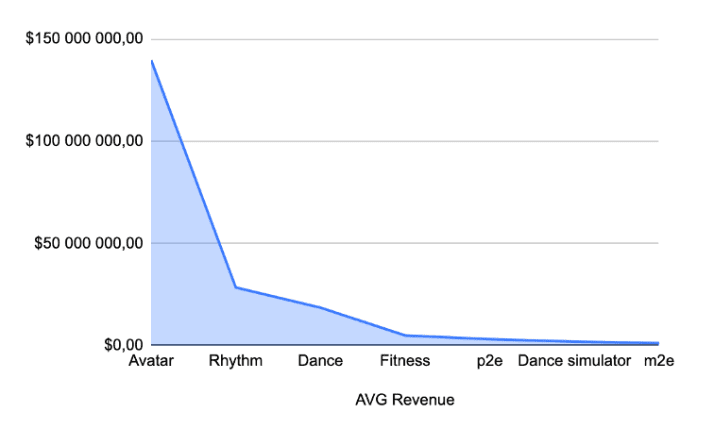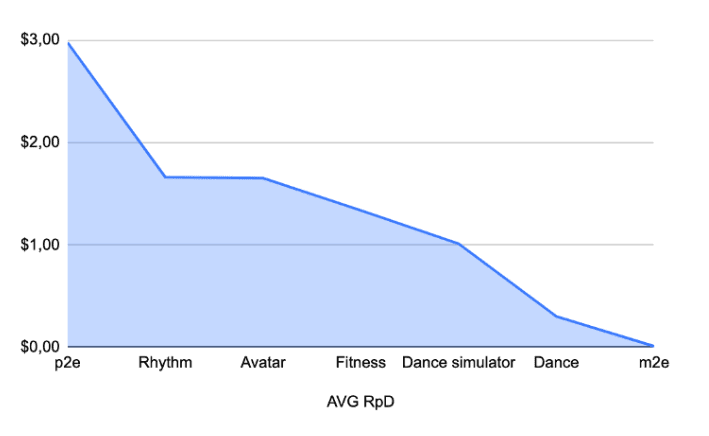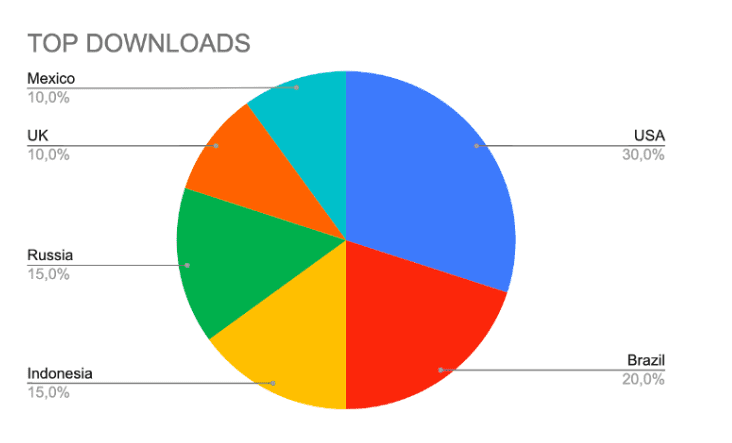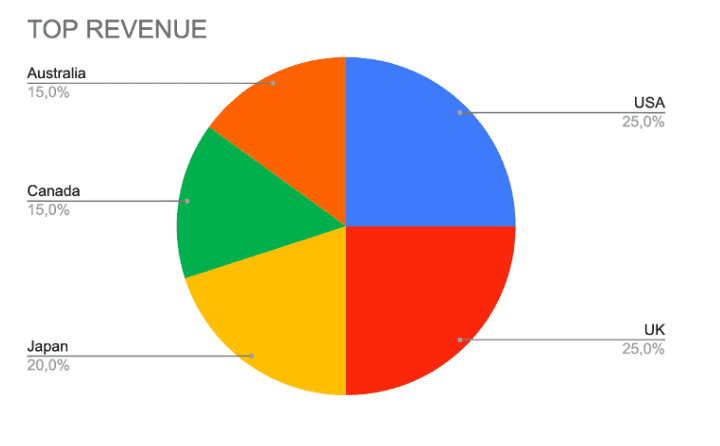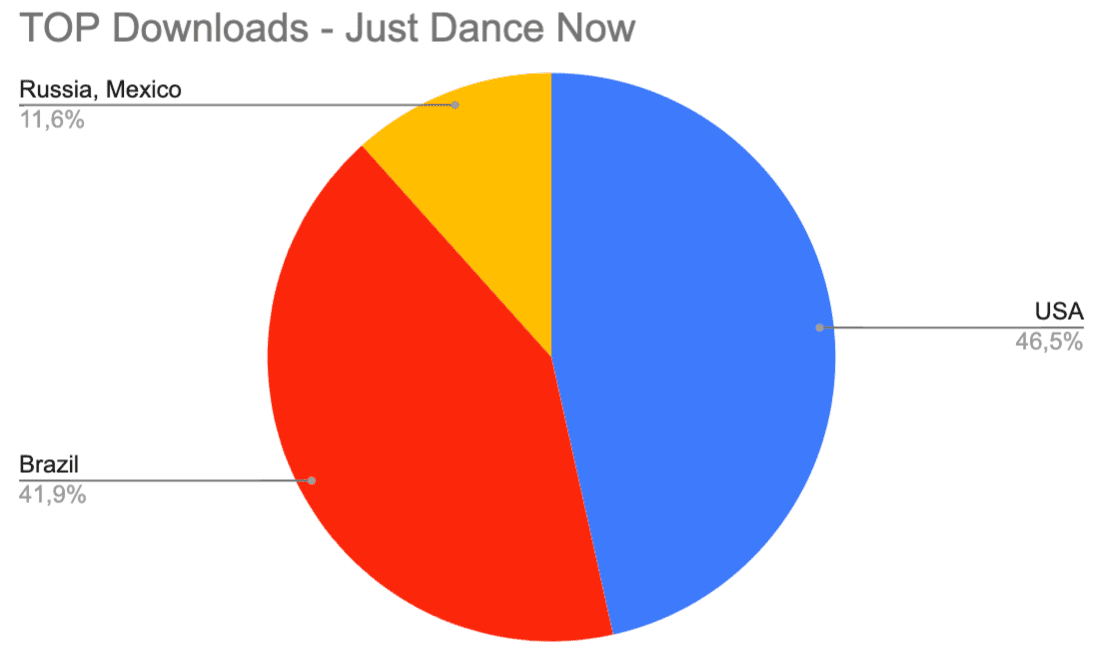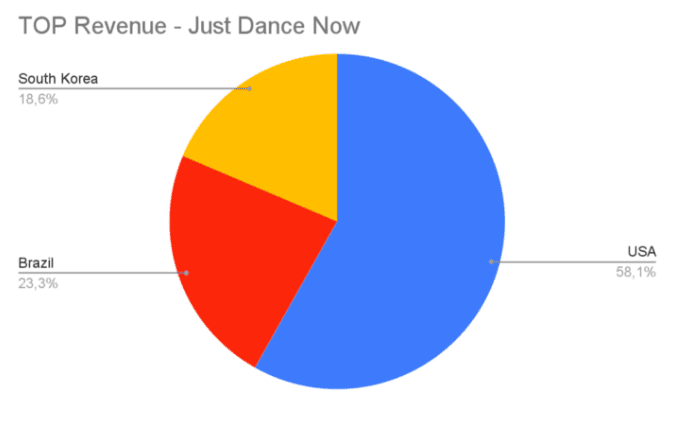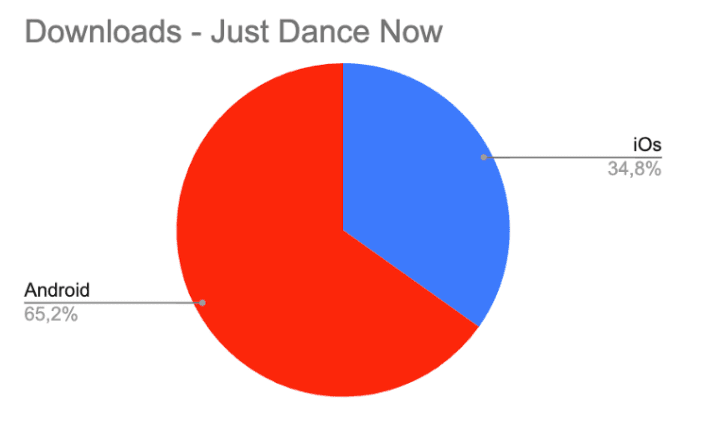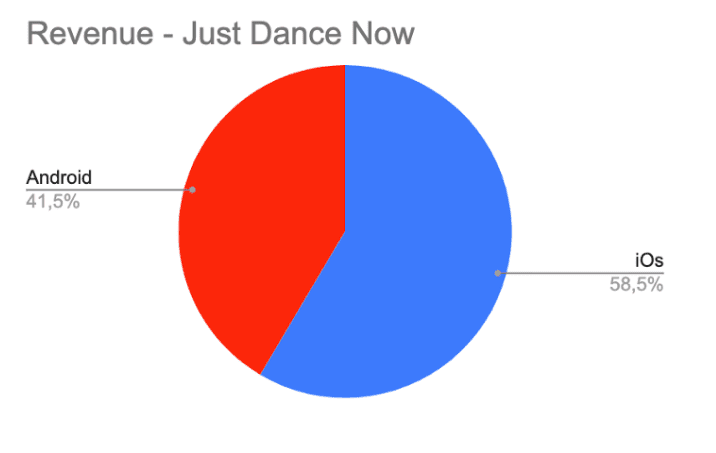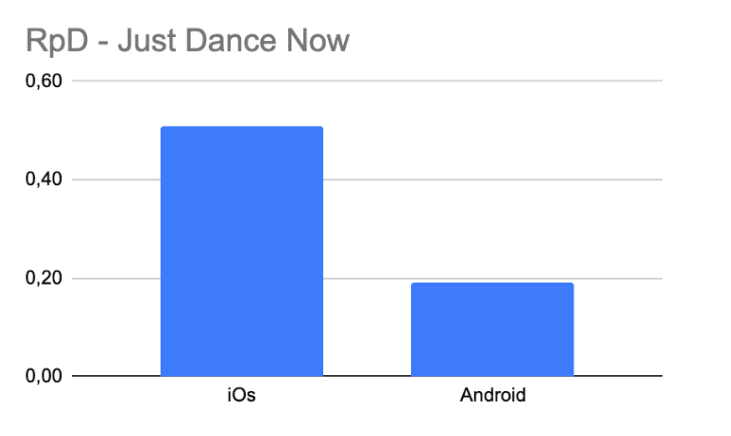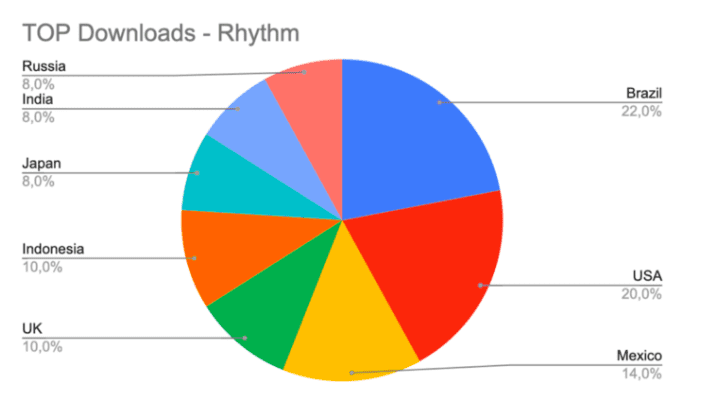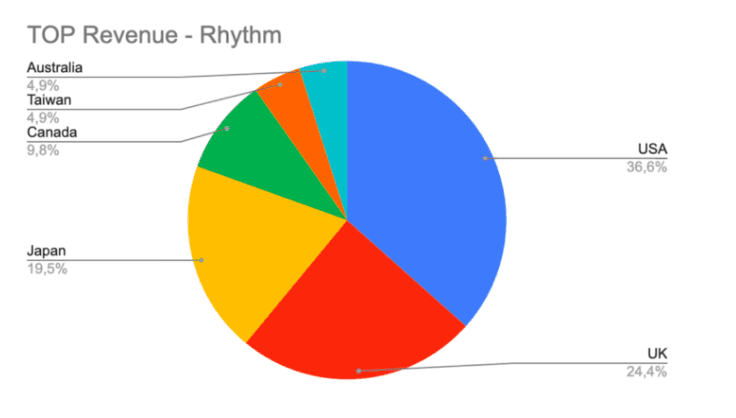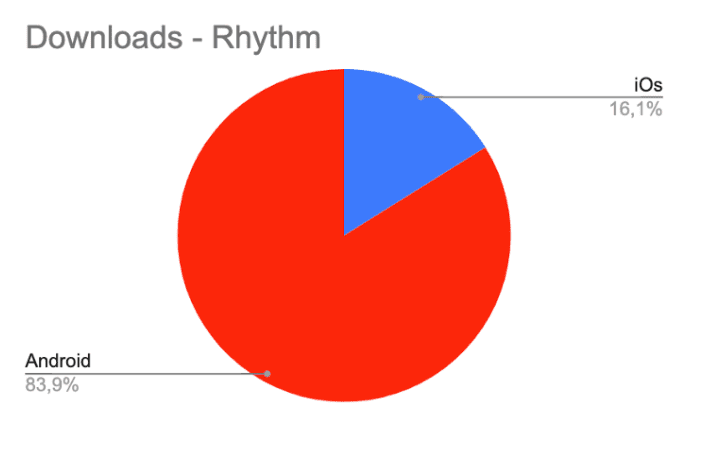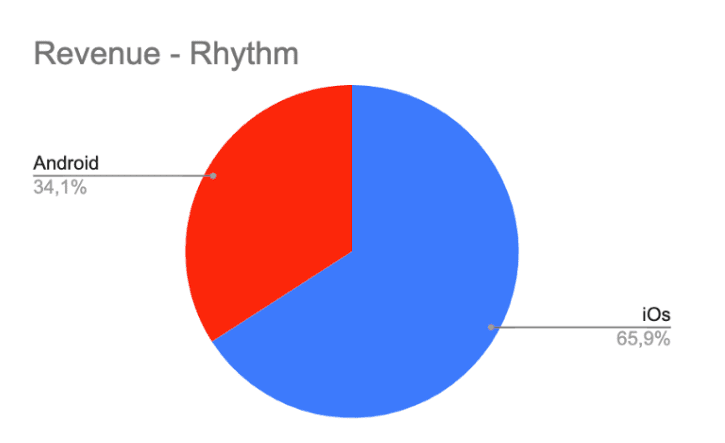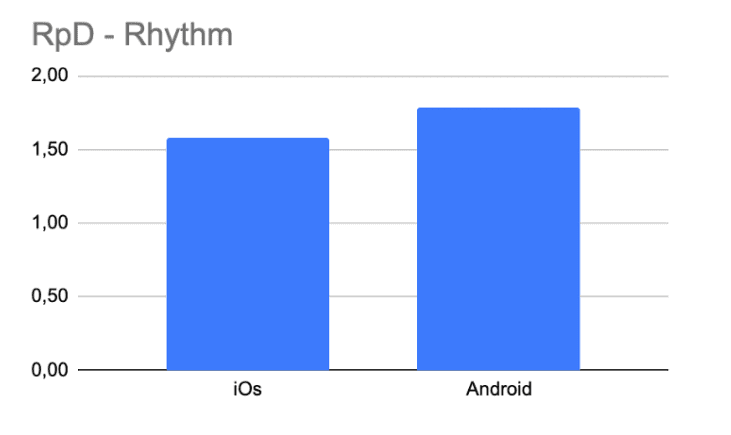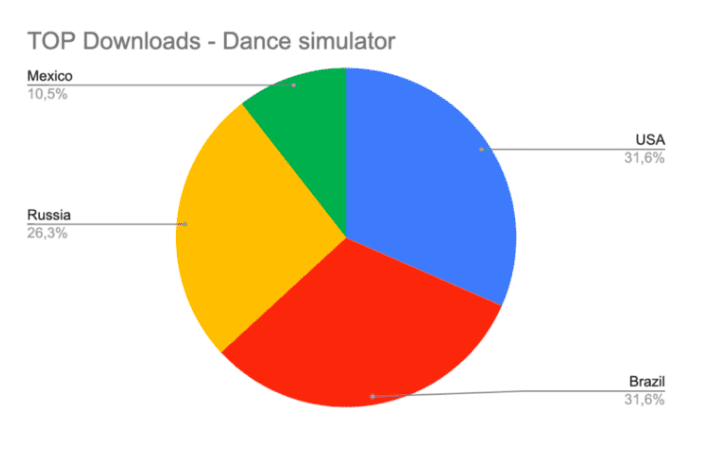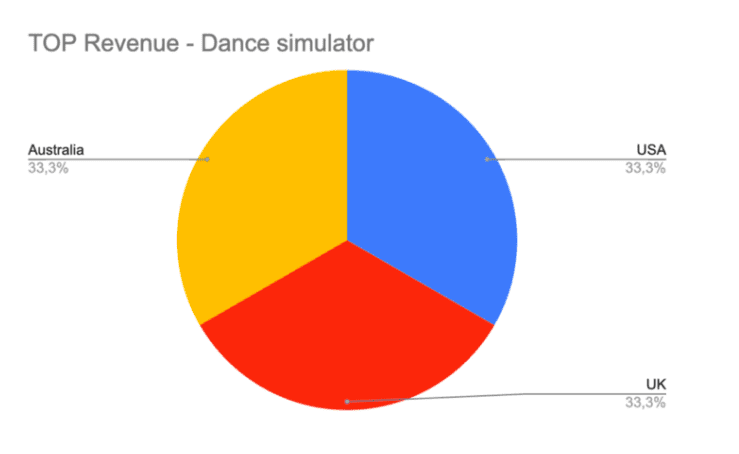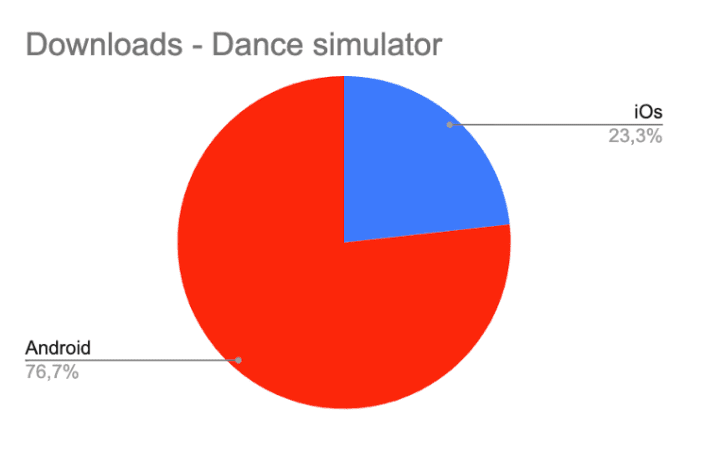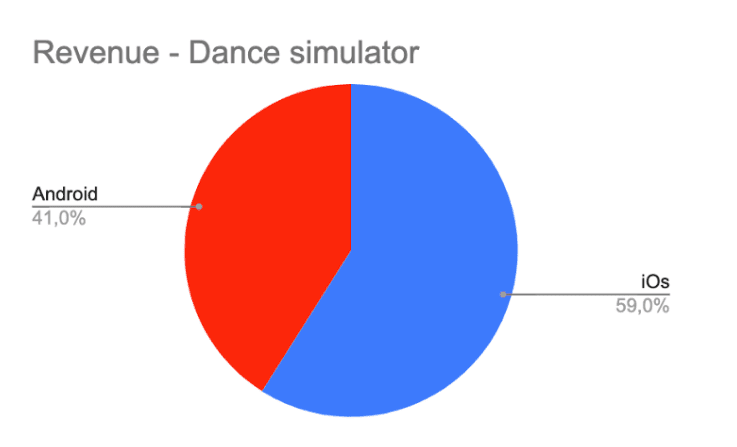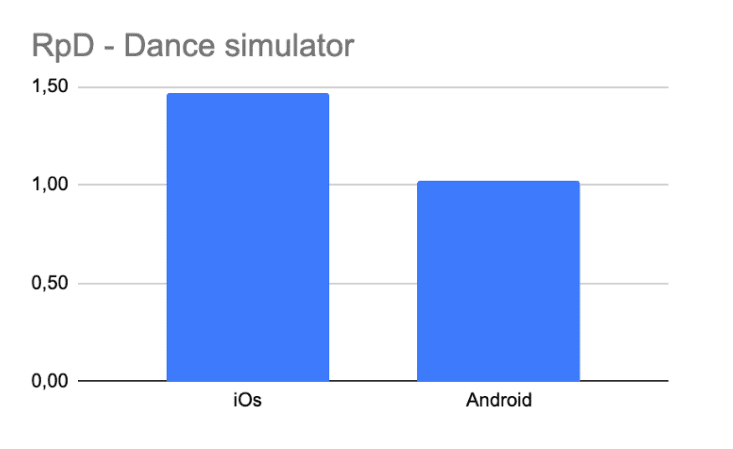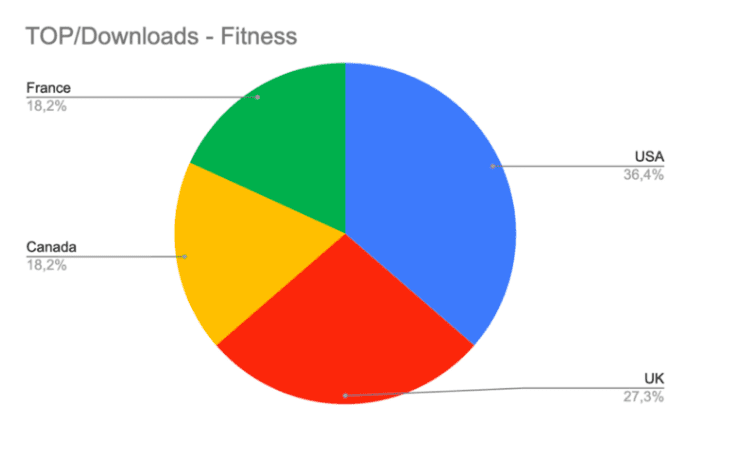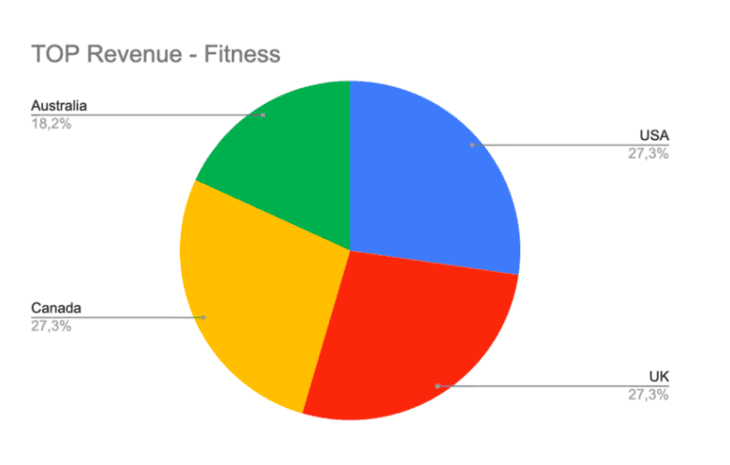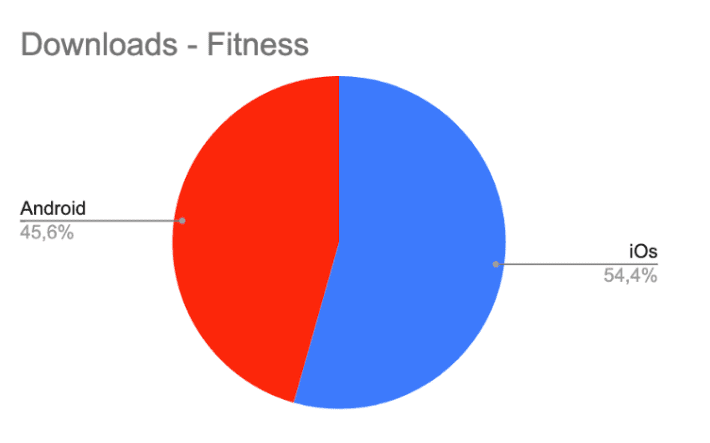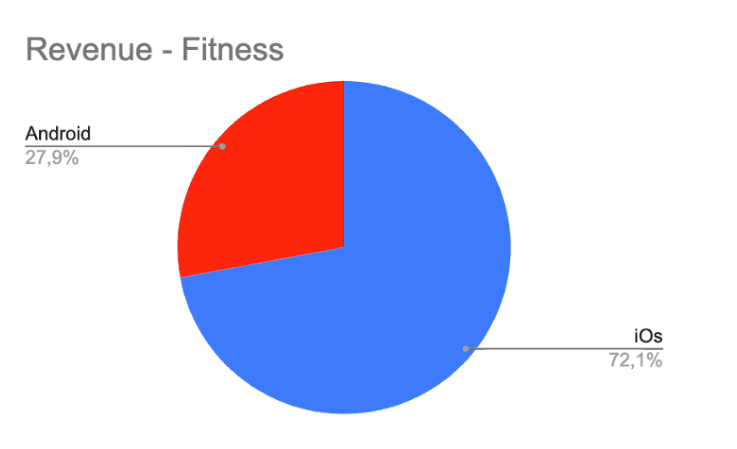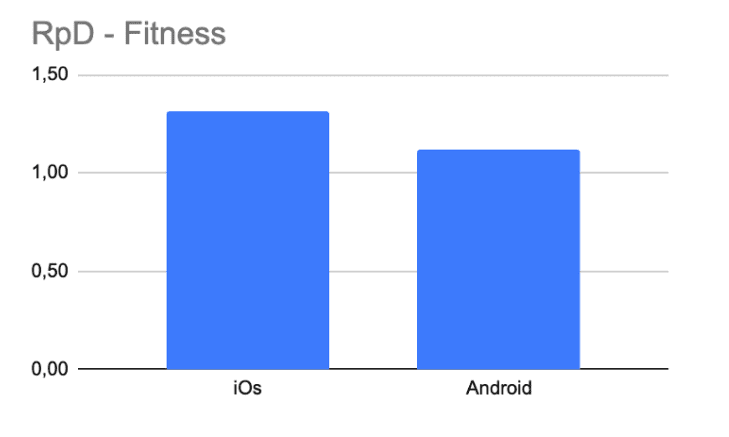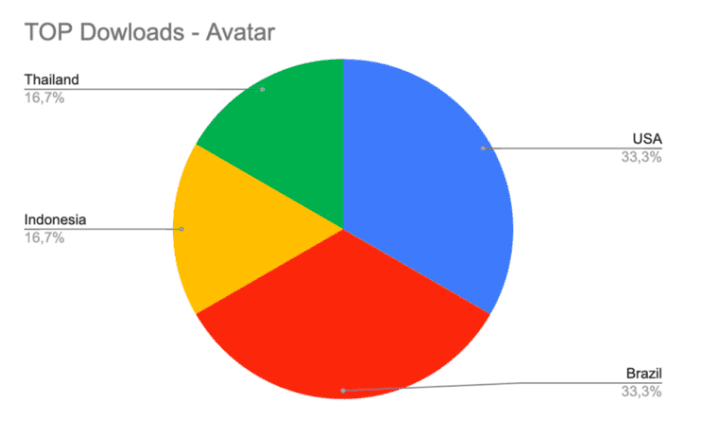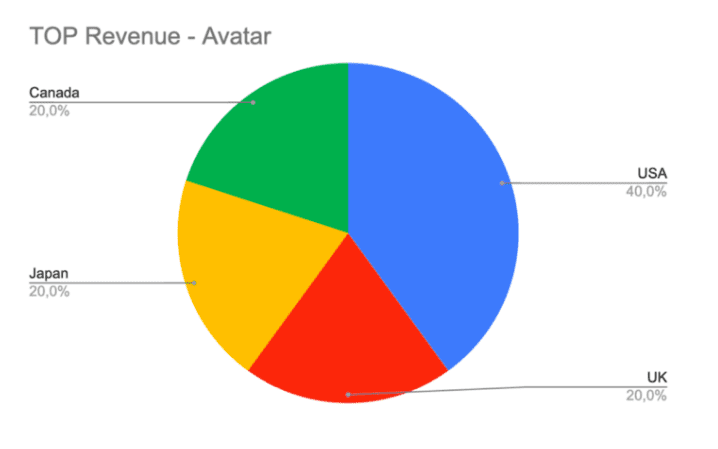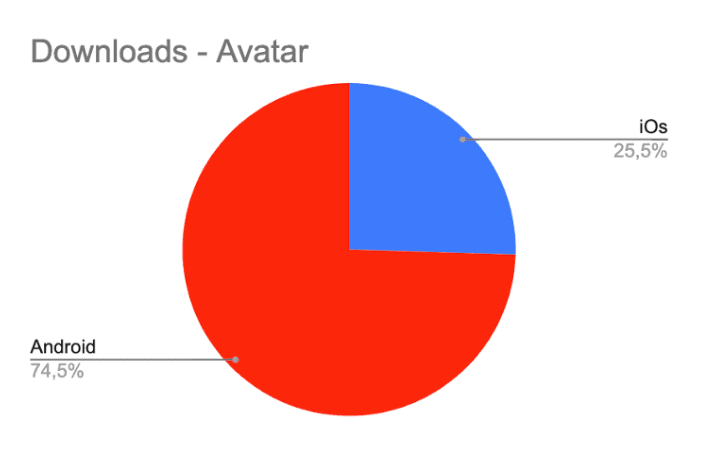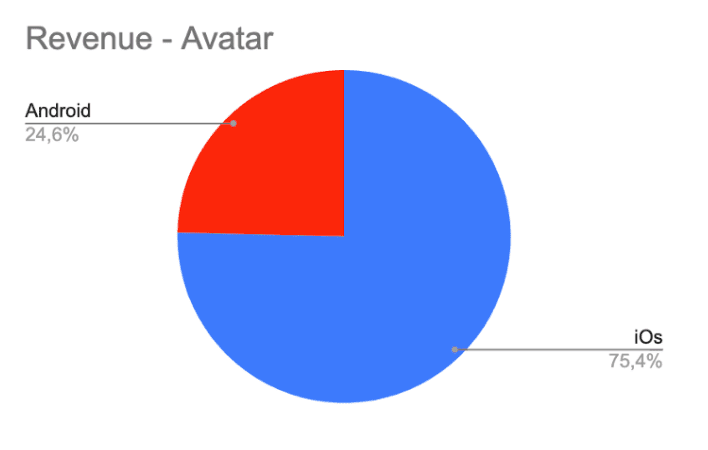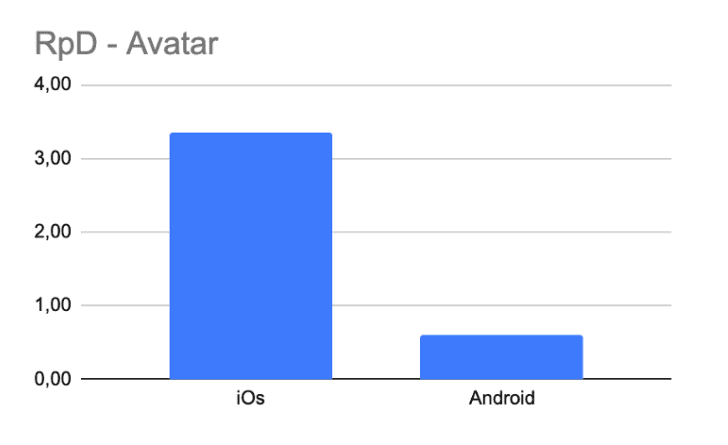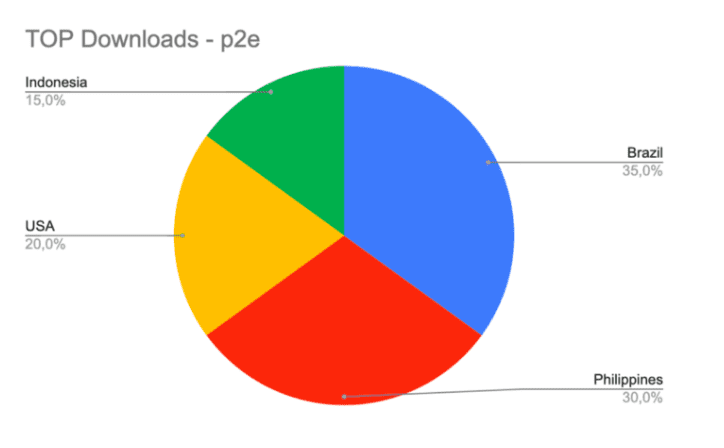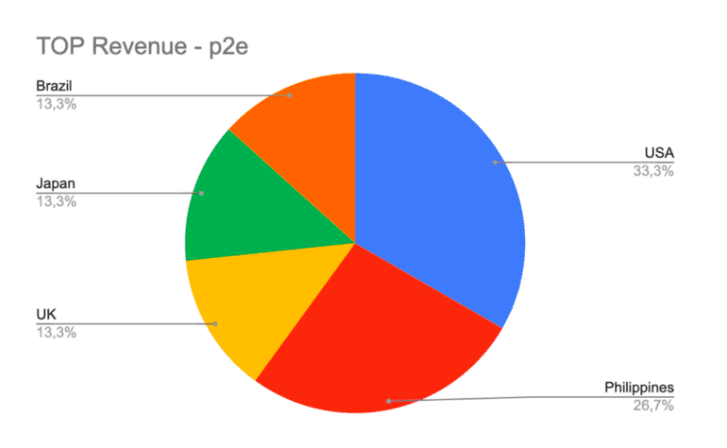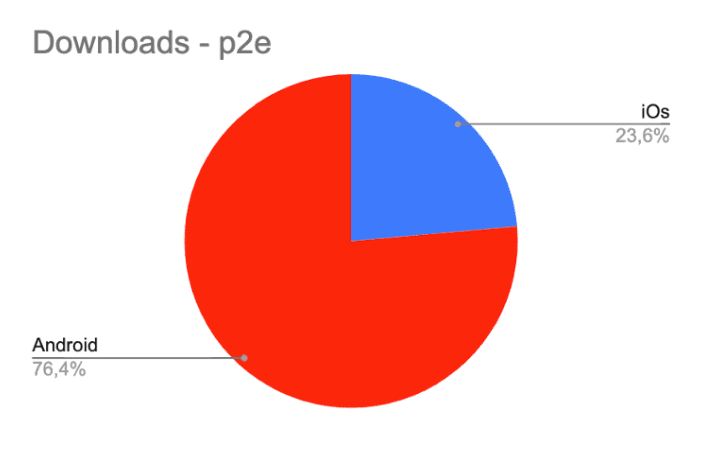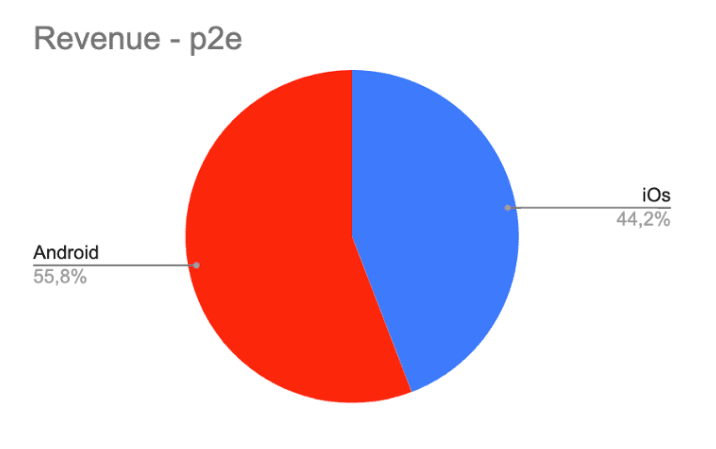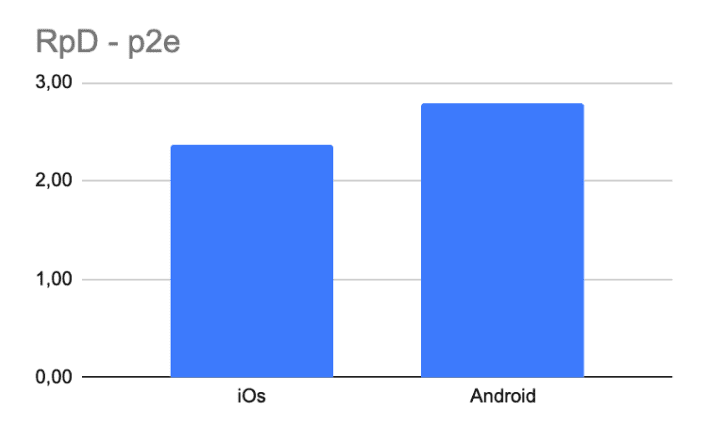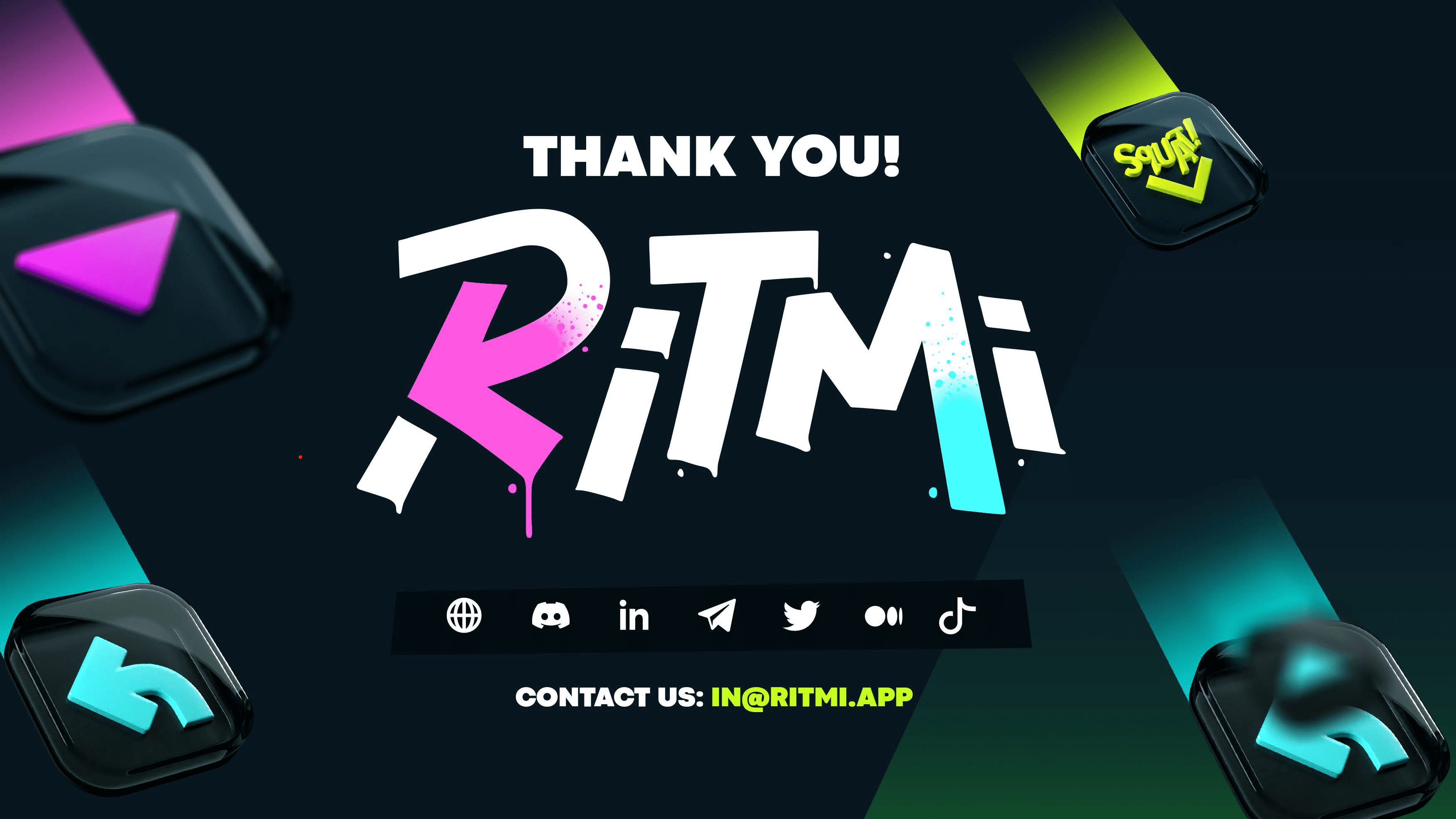Research conducted by: Kate Koroleva
in co-authorship with: Vladislav Driamov, Alexander Simakov & Sergei Boltunov.
© Ritmi
January 2023
Web2/Web3 mobile active, dancing, socializing projects research
Work on any conscious and serious project begins with an analysis of the market in which the project is planned for release. Thus we present you an analysis of the market of mobile gaming in the web2/web3 segment, focused primarily on dancing, active, socializing projects.
With your permission, let’s skip all unnecessary stuff and focus on useful information.
General Information
Purpose of the research
- Search for competitive projects and/or overlapping mechanics with launching project
- Audience analysis by countries
- Estimating potential installs and profits
- Analysis of advertising creatives
Data source
What data were explored
- Downloads (iOs, Android, both)
- Revenue (iOs, Android, both)
- RpD (iOs, Android, both)
- Countries
- Creatives & impressions
Hypotheses for analysis
The mechanics of the planned project are unique, so it is impossible to find direct competitors and analyze its data.
Nevertheless, the project can be decomposed into several key areas:
- Just Dance Now — close mechanics from Ubisoft
- Rhythm games — rhythm gameplay is the basis of game mechanics
- Dance Simulators — our game is about dancing
- Fitness apps — our game is about active actions with your phone
- Avatars / Metaverse — our game is based on the idea of avatars boosting and developing
- P2E and M2E as an analysis of the web3 market on mobile platforms.
We analyze the data from all these directions and find the results we need at the intersection of them.
Results of analysis
Based on the top projects per Downloads and Revenue over the last year.
Summary data
Downloads
Rhythm games are the best in terms of the number of installations, and P2E games are the worst:
Revenue
The market for “avatar projects” is too small but still outperforms rhythm projects in terms of profitability.
M2E projects — also a small market, but judging by the results of the analysis, they almost do not use paid f2p mechanics:
RpD
For P2E games there was a very spotty sampling, but many of them use paid f2p mechanics that, even with a small audience, encourage players to pay very serious charges:
iOs / Android
Expected results: Androids have a wider audience in terms of installations, and Apples have a more solvent audience.
There are interesting biases, more details are below.
Countries
In total, USA and Brazil are most often mentioned in the top downloads for all destinations:
In terms of profit, the USA is the leader, but the United Kingdom and Japan are not far behind:
Specific to each direction
Just Dance Now
Good in terms of installations, but not so much in terms of profitability. In general, the project earns much more (and the audience is much wider), because the storeroom only contains the application for managing the web version of the game. All other purchased content is tied to the game site and other franchise products.
So the most interesting data for us are the interests on the part of the countries: who decided to play this version of the game with this type of input?
Total top 3 countries for downloads and profitability:
Distribution of audience and profits by mobile platforms:
Advertising creatives:
What’s interesting, recently the project has been heavily targeted at Brazil, and there was no gameplay involved in the creatives at all. The video looks more like an advertisement for a fitness application about yoga, salsa, and other dances and does not hint at Just Dance at all.
Rhythm
This is the largest block to analyze since the core gameplay of our project is all the same rhythm mechanics.
Key features:
- Potentially interesting market, with very good installations and good profitability
- The genre requires popular tracks in the game → direct impact on installations and profits.
BUT! There are projects that feature covers of popular tracks (!) and it does not confuse the audience (Magic Tiles 3 is one of the most popular rhythm games)
- It’s easy to land creatives — they are simple and very clickable (the most popular one has more than 1 billion reactions)
- The Asian market is very keen on rhythm games and they bring in a very good income, but it only works if the project is made specifically for the Asian market:
- OSU-style core mechanics
- Anime characters
- Asian music in the gameplay
- deep narrative, dialogue, storytelling, and a love line
Distribution by countries:
Brazil, USA, and Mexico lead in installations.
In terms of profit, USA, England, and Japan.
Mobile platforms:
In terms of installations, Android has a big advantage, in terms of payments — Apple
Although the average payment per user is close in value
Advertising creatives:
Magic Tiles 3 crapped all over the store with their creatives, it had a big impact on installations. 🙂
The average market creatives are built on gameplay and popular tracks.
Dance simulator
On the background of all near-dance games — the most unpopular genre and at the tops are the projects that came out quite a long time ago. There are practically no new games at the top.
In terms of mechanics, they often contain rhythm mechanics.
In terms of visualization and type of gameplay structure, projects are designed for children ages 7–8 years. This is probably reflected in the installations and profits.
Distribution by countries:
Platforms:
Advertising creatives:
Not much material, combining some of the meta-mechanics (cross-dressing, avatars) and core-mechanics (rhythmic or not so much).
Fitness
Not gaming apps, so very specialized. Most of the applications considered were those with dancing in them. In general, the small number of installations shows good revenue.
Distribution by countries:
There’s a lot of interest in fitness apps in the US
Platforms:
There are much fewer people interested in dance fitness apps on Android than there are on Apple. Probably due to the great interest from the USA, where iOs devices prevail
Advertising creatives:
There is practically nothing from dance fitness apps, for the most part, videos from fitness bracelets and similar apps are found in the creatives.
Avatars
Not a very large selection was looked at: 1 app is a metaverse with avatars, and 2 is a pure avatar apps.
Potentially interesting and very hype right now, and if it has anything other than avatars, there are good indicators.
Distribution by countries:
The presence of avatars, socialization, and the ability to communicate/interact with other users highlights well the interests in Asian countries that appear in the tops.
Platforms:
Maximum mirror situation with installations and profits.
Advertising creatives:
Focus on avatar visuals, customization, and UGC mechanics for social networks.
There are cool creatives to promote K-pop idol concerts inside the app.
P2E
Very niche market now, with a small audience. Few quality games. Only the very top apps were reviewed (but according to the metrics it is hard to call “top” in comparison with games of the same genres without crypto-mechanics).
What is important: the developers understand that they work with the mobile market, and therefore, judging by the revenues, they build paid f2p mechanics, which with a small audience perform well. That is, the crypto audience is willing to pay and f2p is good for them.
Distribution by countries:
The Asian market is very interested in crypto games.
Platforms:
Android brings in even more revenue than Apple.
Advertising creatives:
It is forbidden by FB and mobile store policy to advertise crypto-games. Apparently, there are on other sites, but appMagic doesn’t show them.
M2E
Everything runs around a variety of Stepn clones, but no one could do better 🙂 In general, very niche and not at all about games, so the audience is not quite close to us.
The developers don’t understand how to work with mobile audiences, there are almost no paid f2p mechanics, and everything is based on crypto.
The distribution by country and platform is not even interesting to look at.
Advertising creatives:
It is forbidden by FB and mobile store policy to advertise crypto-games. Apparently, there are on other sites, but appmagic doesn’t show them.
Summary
- Dance and active mobile projects have potential, especially in marketing. Marketing needs a very serious focus. And in this field you can try all kinds of creatives, both typically rhythmic and from other genres;
- The product probably doesn’t have to be a deep game, more social UGC mechanics are needed;
- The US and UK are the most active audiences in the mobile market (both in terms of installations and payments), so don’t forget about them and be sure to think about how to work with them properly;
- Asians will be interested in similar projects, but you should definitely think about adapting some elements for them to succeed. Pay more attention to customization opportunities;
- Brazil (and Latin America in general) is also a potential market, but you need to look deeper into their mentality and interests;
- Certainly, collaborations with music labels are needed to bring more attention to beat mechanics and more payment options, as well as for more creative feedback;
- Despite the new rules from Apple, you can’t give up on iOs because it brings in a lot of revenue.

